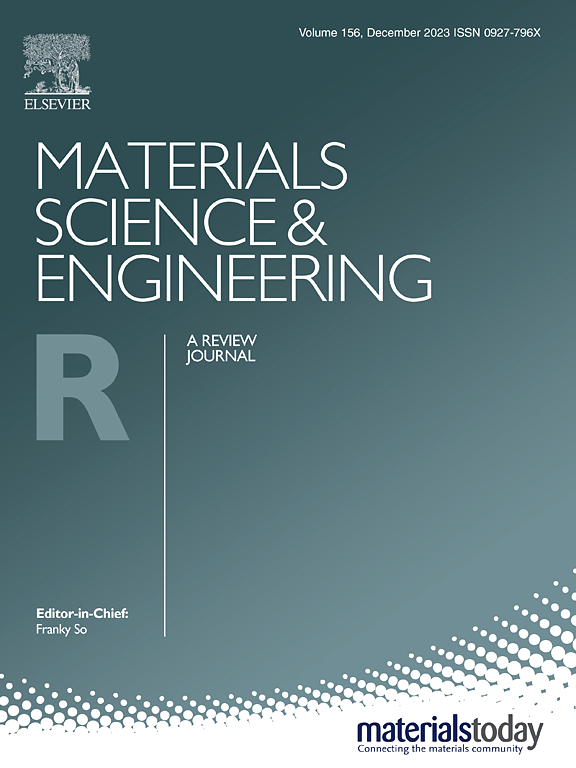High-entropy electromagnetic functional materials: From electromagnetic genes to materials design
IF 31.6
1区 材料科学
Q1 MATERIALS SCIENCE, MULTIDISCIPLINARY
引用次数: 0
Abstract
The widespread application of electromagnetic (EM) wave technology in fields such as communication, medicine, and national defense has introduced new challenges related to radiation pollution. Developing efficient EM wave absorption materials has become a critical technological frontier for ensuring human health, safety, and sustainable industrial development. High-entropy (HE) materials, due to their diverse chemical composition and excellent compositional regulation ability, exhibit abundant response mechanisms and adjustable loss characteristics, indicating that they will become a transformative force in the field of EM function. Therefore, we summarize the multi-scale integrated assembly design strategy of HE-based EM wave absorption materials, and comprehensively review the latest research progress of HE EM wave absorbing materials, including high entropy ceramics (HEC), high entropy alloys (HEA), and HE composites. Finally, the core challenges in developing HE-based EM functional materials are explored and potential research opportunities are revealed. We hope this review will inspire further scientific exploration, advance innovations and applications of HE materials in the field of EM wave absorption, promote human safety and health, and contribute to the achievement of sustainable development.
高熵电磁功能材料:从电磁基因到材料设计
电磁波技术在通信、医疗、国防等领域的广泛应用,带来了与辐射污染相关的新挑战。开发高效的电磁波吸收材料已成为保障人类健康、安全和工业可持续发展的关键技术前沿。高熵(High-entropy, HE)材料由于其多样的化学成分和优异的成分调节能力,表现出丰富的响应机制和可调节的损耗特性,预示着它将成为EM功能领域的一股变革力量。因此,本文总结了HE基电磁波吸收材料的多尺度集成设计策略,并对高熵陶瓷(HEC)、高熵合金(HEA)和HE复合材料等HE类电磁波吸收材料的最新研究进展进行了全面综述。最后,探讨了发展he基EM功能材料的核心挑战,并揭示了潜在的研究机会。我们希望通过本文的综述,能够启发进一步的科学探索,推动高频材料在电磁波吸收领域的创新和应用,促进人类的安全与健康,为实现可持续发展做出贡献。
本文章由计算机程序翻译,如有差异,请以英文原文为准。
求助全文
约1分钟内获得全文
求助全文
来源期刊

Materials Science and Engineering: R: Reports
工程技术-材料科学:综合
CiteScore
60.50
自引率
0.30%
发文量
19
审稿时长
34 days
期刊介绍:
Materials Science & Engineering R: Reports is a journal that covers a wide range of topics in the field of materials science and engineering. It publishes both experimental and theoretical research papers, providing background information and critical assessments on various topics. The journal aims to publish high-quality and novel research papers and reviews.
The subject areas covered by the journal include Materials Science (General), Electronic Materials, Optical Materials, and Magnetic Materials. In addition to regular issues, the journal also publishes special issues on key themes in the field of materials science, including Energy Materials, Materials for Health, Materials Discovery, Innovation for High Value Manufacturing, and Sustainable Materials development.
 求助内容:
求助内容: 应助结果提醒方式:
应助结果提醒方式:


